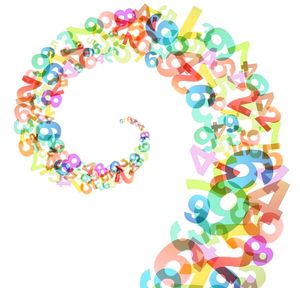By Dr. Ken Broda Bahm:
In previous posts, I’ve revealed a near-missionary zeal for structure. The division and sequence of presentations should be not simply known by the presenter, but emphatically obvious to the audience. I think that is better communication. It is also especially suited to legal persuasion during trial where litigators use a mostly-oral medium in order to help lay audiences understand what are often highly complex facts and evidence. Key questions should guide the opening, chapters should break up the direct examinations, and steps should lead your jury to the right verdict. And all of these dividers will be more clear to your target audience of jurors, arbitrators, or judges if they are not simply sequenced, but explicitly numbered as well. As much as I emphasize that, however, the attorneys I work with don’t always number as clearly as I’d like. So, to take another run at it, here are seven reasons why explicit enumeration is better.
1. Numbering “Chunks” Your Message
“Chunking” refers to the practice, supported by research, of breaking a larger message into smaller parts. Separation into segments makes the message, argument, or story more understandable, just as adding a couple of dashes to a telephone number (3 groups of 3 or 4 numbers instead of one group of 10) makes it easier to remember the full sequence of numbers. But it is only a chunk if the audience knows it’s a chunk. For that reason, adding explicit numbers to your list is the way to go.
2. Numbering Focuses Your Labels
When you give a number, you are forced to follow that number with a short and punchy label for your argument. You don’t say “number three,” and then just continue speaking in paragraphs. Instead you say something like, “Number three, the contract was complete and consensual.” That short tag is vital for projecting simplicity and for giving the audience a handle for recalling the information.
3. Numbering Highlights the Transitions
Attention span is more limited than you think. Research indicates that attention drops precipitously within the first ten minutes of a presentation. Because a juror’s attention is temporary, it is best to remind yourself that you will continually need to be regaining attention. It shouldn’t be a 60-minute opening statement, it should be six 10-minute openings. The transition from one topic to another, combined with the clear message that, “This is new!” provides a great opportunity to grab your listeners again.
4. Numbering Leads to Notes
In courtrooms where jurors are allowed to keep their own written notes, enumerating your points is a vital way to encourage note-taking. One criticism of notes is that what any juror ends up writing down can be a crap shoot. But we have all known since grade school, that the numbered list coming from the teacher means that it’s time to start writing. And if you can cause even one juror to write down your list, then you are composing a note that will be brought into the jury room for deliberations. That’s pretty powerful.
5. Numbering Creates a Sense of Progress
When I conduct post-trial interviews of jurors, one common criticism of the trail lawyers is that they’re repetitive. Sometimes, the lawyers actually are repetitive, but more often, I think the attorney is emphasizing a new point and the juror has just missed the distinction. “He was talking about the contract ten minutes ago,” the juror thinks, “and he’s still talking about the contract now.” Numbering your points will tell that juror that you’re not repeating yourself, but have instead moved on to a different section or a different reason.
6. Numbering Creates Anticipation
When a speaker signals that they have a list of points to provide, that tells listeners what to expect. They know to keep an open mind, for example, when they understand that they’ve heard only three out of the five points. In addition, an enumerated structure creates the opportunity to follow a strategic sequence: one that emphasizes primacy and recency, and builds to a climax by saving the best for last.
7. Numbering Keeps the Door Open
The previous six on this list all provide good reasons why presenters should number, but this 7th reason provides an especially important rationale for the witness on the stand: Using a number as a framework for your answer acts as a kind of insurance. If you start out an answer in cross with, “Yes, and there are three reasons for that…” opposing counsel is more likely to let you finish. And even if you are cut off after the first reason, jurors will know that you had more and will remember when your own counsel comes back to that point on redirect.
Social media savvy readers will recognize the post above as what’s called a “listicle,” or a quick article framed around a numbered list that is geared toward scanning or easy reading. Some longer-form writers might sneer at such lists, and it is true that highly analytic prose is unlikely to be delivered in a quick and punchy list. But the blogosphere is awash in them, and for a good reason. Lists are more accessible to the reader, and as a result, are more likely to be clicked on. That clear example – lists motivate attention – is one that should be taken to heart by trial lawyers.
______
Other Posts on Structure:
- Avoid the “And Another Thing…” Style in Rebuttal
- When You Think “Story” Think “Structure”
- Chunk Your Trial Message
______
Image Credit: 123rf.com, Used under license, Copyright: studiom1 / 123RF Stock Photo
